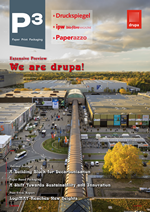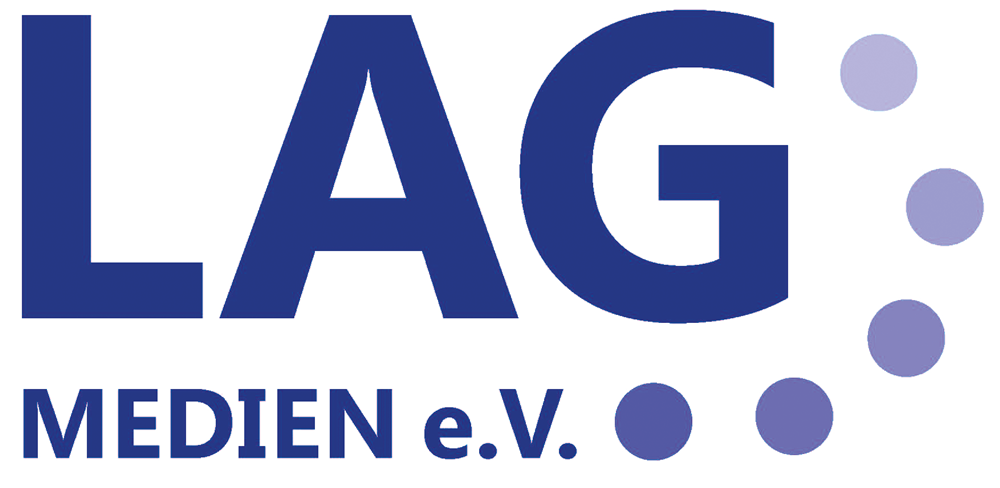P3 1-2/2022 en
What Does it Mean ...
Dot Gain
Education Gap

Dot gain in print is the most important criterion for checking the printing process. It is determined by the difference between the area coverage values in the print and the area coverage values (or tonal values) in the file. Walter Heitmann, who has been teaching printing technology at the Johannes Selenka School in Braunschweig for over 30 years, explains the term.
The dot gain in print is caused, among other things, by the (measurably verifiable) light trapping effect.
Dot gain - a central parameter in the production process
APRINT (%) – AFILE (%) = ΔA (dot gain in print in %)
In the PSO, the abbreviations “A” (area coverage) and “ΔA” (“Delta A” = dot gain) are given for the area coverage in print and the dot gain.
The dot gain can be described as an enlargement of the halftone dots. It is created in the printing process by the following factors:
- The pressure adjustment of 0.10 mm to 0.15 mm metric pressure (depending on the printing machine format and information in the printing machine manual) in the printing zones from the plate cylinder to the blanket cylinder and from the blanket cylinder to the printing cylinder (incl. substrate).
- The viscosity of the ink, which is also temperature dependent.
- The surface finish of the substrate.
- The light trapping effect, in which the light emitted by the measuring light is diffusely reflected back in the layers of the paper and part of the light can no longer be reflected back through the colored layer. This effect also occurs when looking at a print: a print looks darker than it really is. One therefore speaks of geometric and optically effective area coverage (or equivalent area coverage). Due to the surface structure, the light trapping effect accounts for more than 50% of the dot gain in uncoated paper. This can even be proven metrologically: By comparing the area coverage measurement, e.g. of a 40% field of a chromatic ink with a densitometer and measuring with a video measuring microscope to assess printing plates (in the paper measurement mode), you get approximate values for the influence of light trapping. A densitometer is subject to the influence of light capture and therefore determines the optically effective area coverage, a video measuring microscope takes a picture of the surface and thus outputs the geometric area coverage:
Optically effective area coverage – geometric area coverage = light trapping effect
The dot gain also depends on the halftone frequency and whether AM or FM screens are used. In the 1980s, Felix Brunner (see “System Brunner”) described this as a geometric phenomenon in his “edge zone theory”:
The total extent of the halftone dots is decisive for the amount of dot gain. With a halftone frequency of 40 L/cm there are fewer screen dots than with a 60 grid. With both screens, however, the halftone dot widening has the same effect in printing. The number of halftone dots also increases the total scope and thus the dot gain. This also explains why FM screens with a very small dot size (and many more dots) show a strikingly higher dot gain compared to AM screens.
The “edge zone theory” shows why printing curves show a “belly” or why the dot gain in the mid-tone range has a higher value and in the light and 3/4 tone value ranges a lower value.
The dot gain in print is decisively influenced, for example, by the following print and material-specific parameters:
- Screen technology: AM or FM screen technology
- Pressing and quality of the printing blankets
- Paper Quality (Paper Categories)
- Impression pressure
- Ink
- Coordination ink/fountain solution additives
- Condition of the inking and dampening rollers
Dot gain and control strategy in the production process
In many places, halftone motifs are (still) checked in print by simply checking the solid tone density. It is now a well-known fact that “... the matching of screen tones primarily requires the approximate matching of their tonal values. It is often not possible to guarantee this with only solid color matchings.” (Handbook Offsetdruck, 2001 edition, page 7. 2-1).
“If only the spot colors match, while the halftone values differ widely, the images will not be the same. Therefore, it is recommended as a control strategy to first pay attention to the constancy of the dot gain ... in the middle tone when adjusting the print run and when controlling the production run.” (Handbuch Offsetdruck, 2001 edition, page 7. 4-1).
Brunner (see again “System Brunner”) has pointed this out for a long time: the color balance and the gray balance of prints (e.g. in the case of reprints) first and foremost require that the dot gains match.
Dot gain is the key quality parameter in the print production process.








